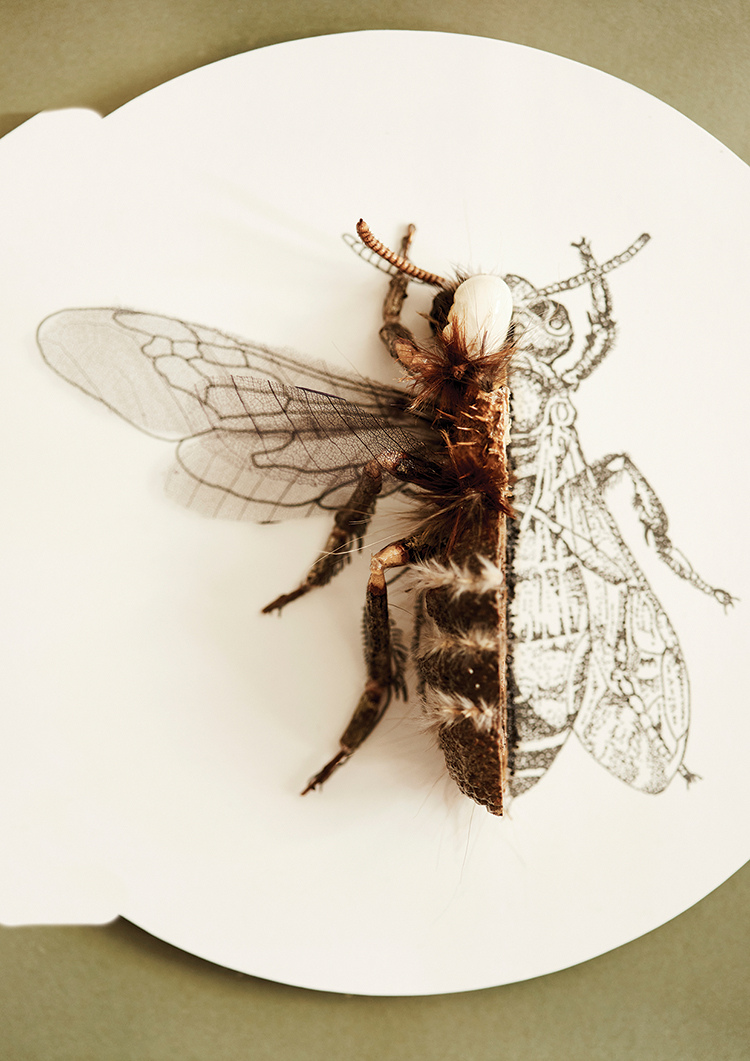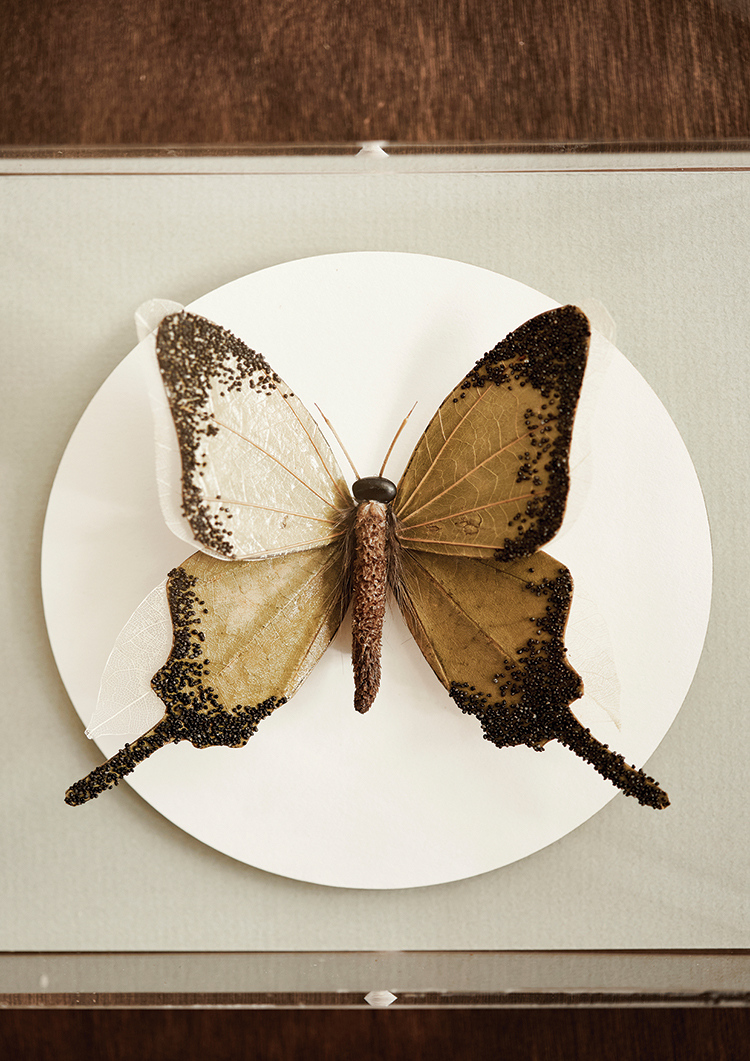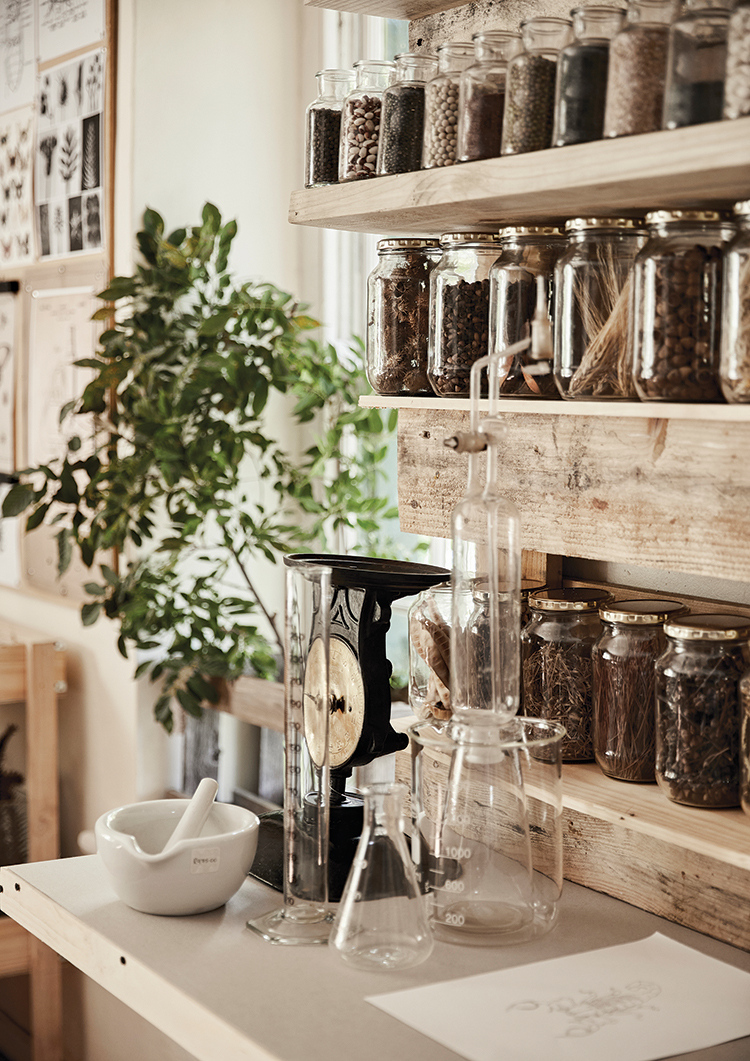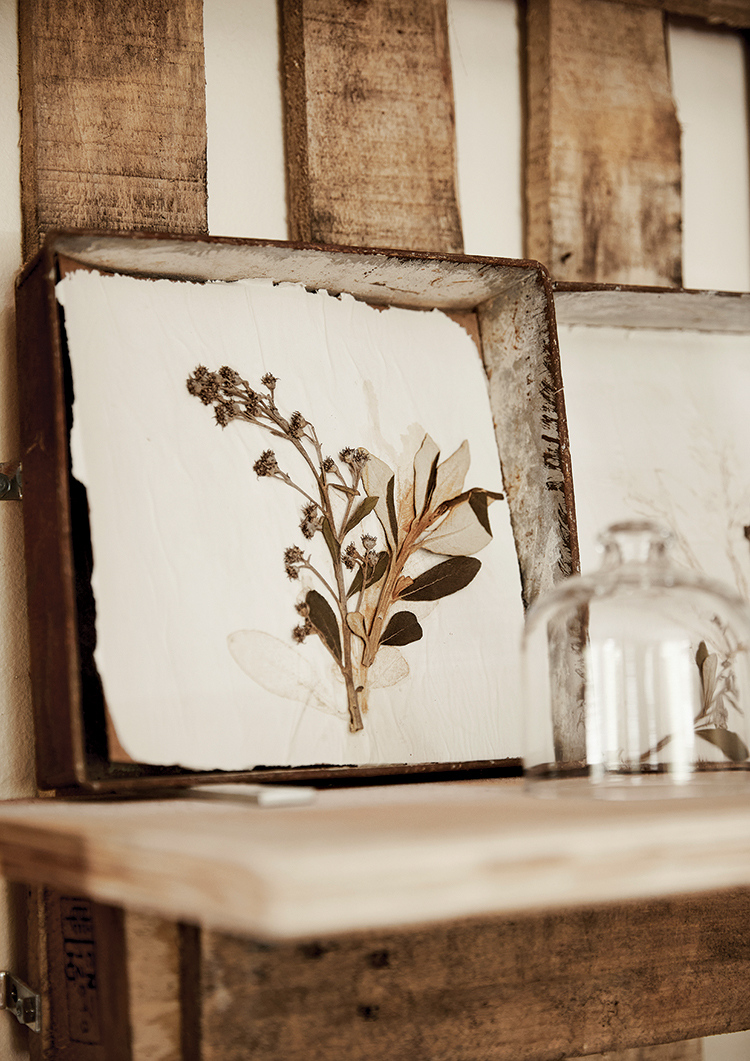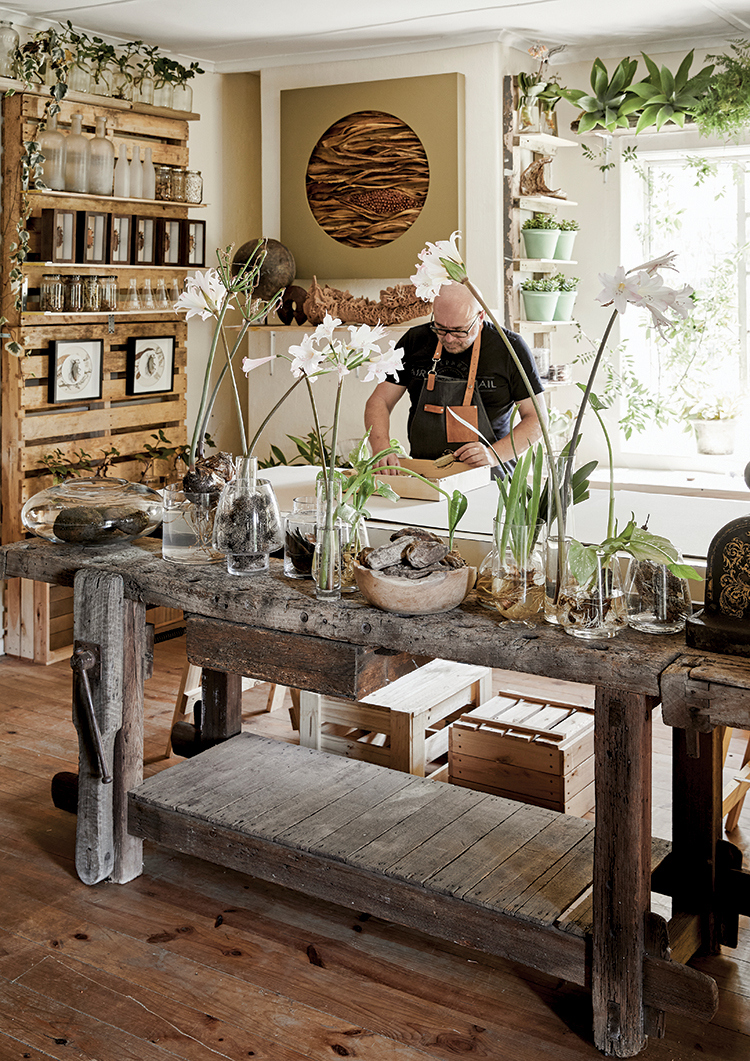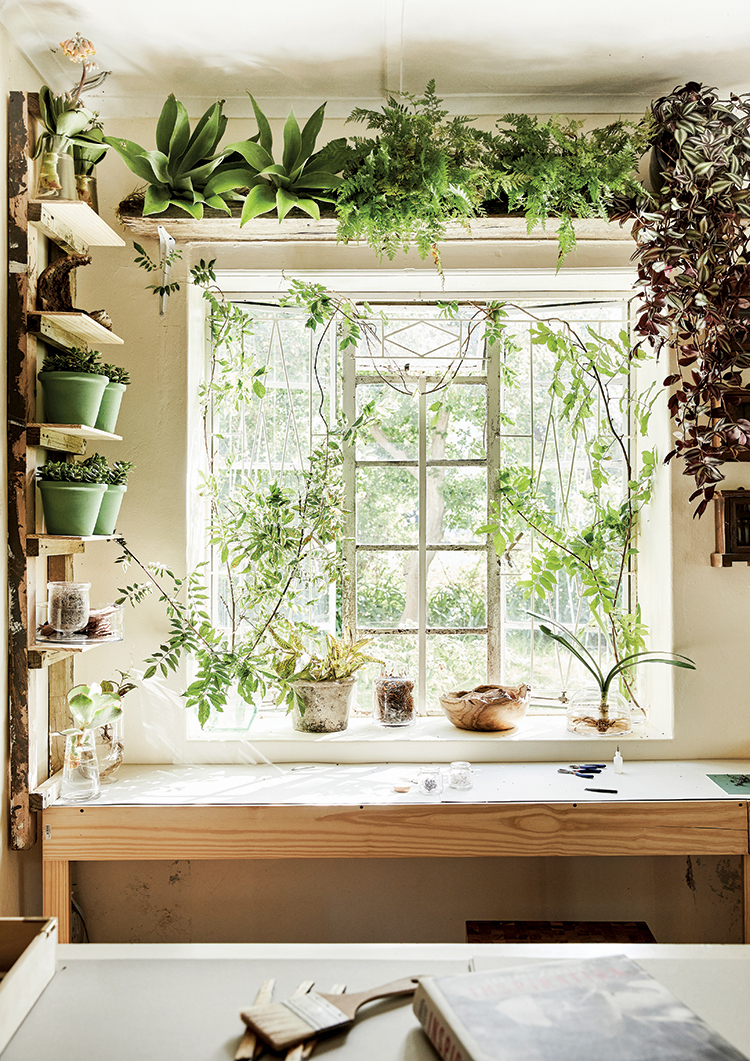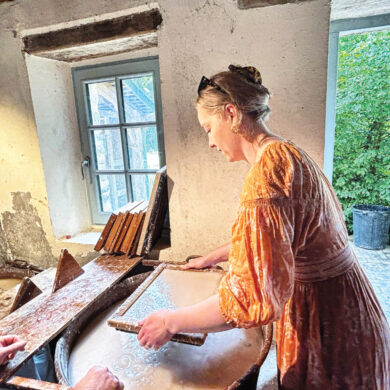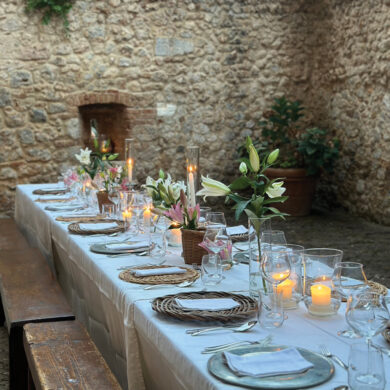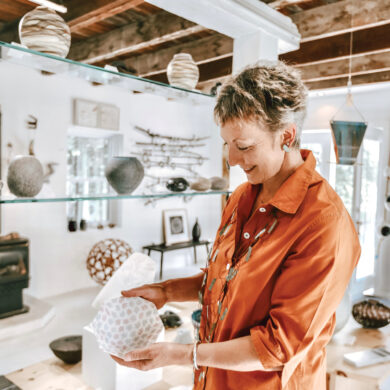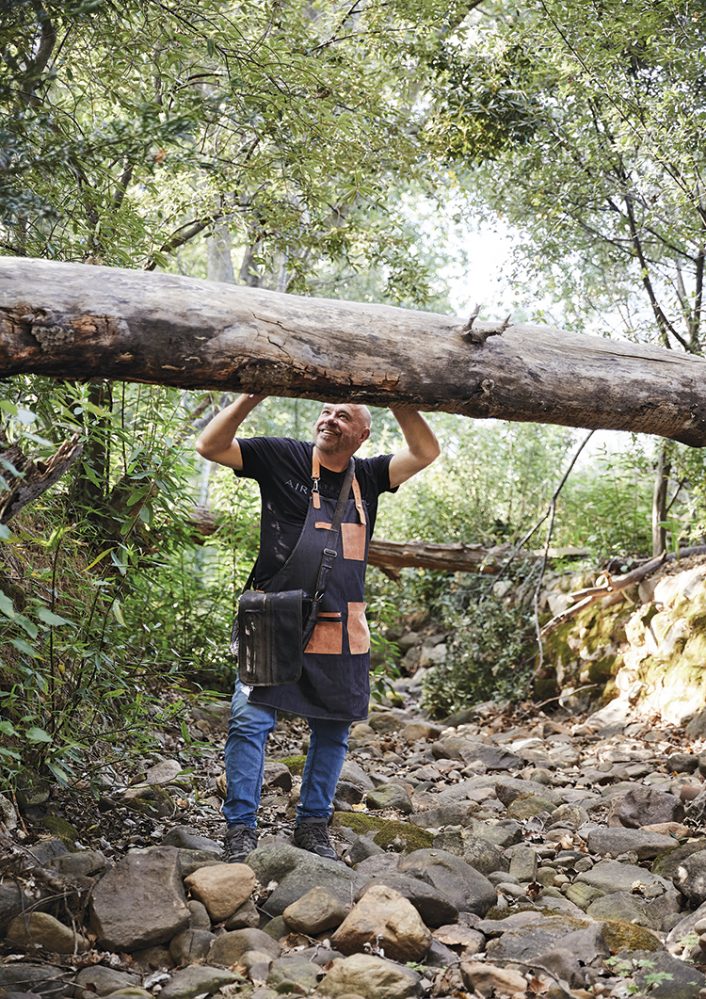
A butterfly’s antenna is club-shaped with a long shaft and a bulb at the point. The end of the style of an African protea flower happens to look identical. As a botanical artist, I believe my work is all about finding these examples of similitude in nature. Using leaves, seeds and other plant materials, I meticulously combine and assemble them, metamorphosing my foraged finds into insect forms.
I call my insects eco-skeletons; it’s a wordplay on the exoskeleton of a beetle. In my studio, the walls are crawling with my “insects”—from scorpions to green-winged butterflies—all handmade, through my obsessive creative vision.
One, a wild-looking bee with a downy abdomen, has a lifelike striped abdomen made from individual grass seeds I placed with precision over many hours to mimic delicate body hairs. Next to it, a butterfly has wings fashioned from pressed leaves, the pulp removed to expose the veins to resemble the structure of a wing.
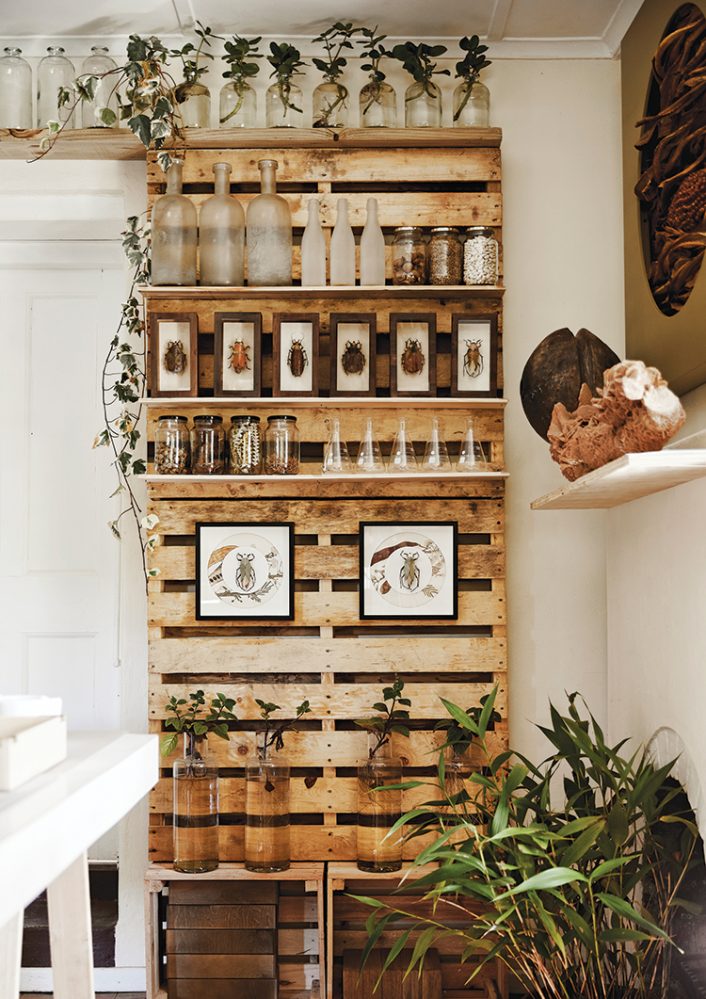
Sometimes the materials I choose will dictate the artwork, such as my butterfly with its leafy green wings. They began life as magnolia leaves, which I processed to remove the pulp, leaving the fine veins of the leaf exposed like a carcass, only to find a second life as a wing on one of the eco-skeletons. It also works the other way around where I make a drawing of the insect, breaking it down into its components, and then I look for materials to create it.
I am surrounded by inspiration. In my studio, natural elements are dried, pressed and sometimes coloured using handmade vegetable dyes or charcoal. I am constantly tinkering with various plants in stages of decay and preservation, some of which take weeks to process.
I’ve always been a collector, but the previous lives of all the objects in my studio, not just the plant materials, contribute equally to my work. The rugged workbench in the heart of the studio, the antique crafts tools I use, and medical journals from the 1930s used to press leaves form part of my creative ecosystem. There’s a flow of energy and exchange between the pages and the plants and the wood and the insects that are part of the process.
My studio is crammed with bottles containing the medium for my work—seeds, leaves and other unidentifiable fragments of flower anatomy, painstakingly collected and catalogued. I forage a lot. The fynbos plant kingdom we have in the Western Cape offers a lot of possibilities. They are tough and textured.
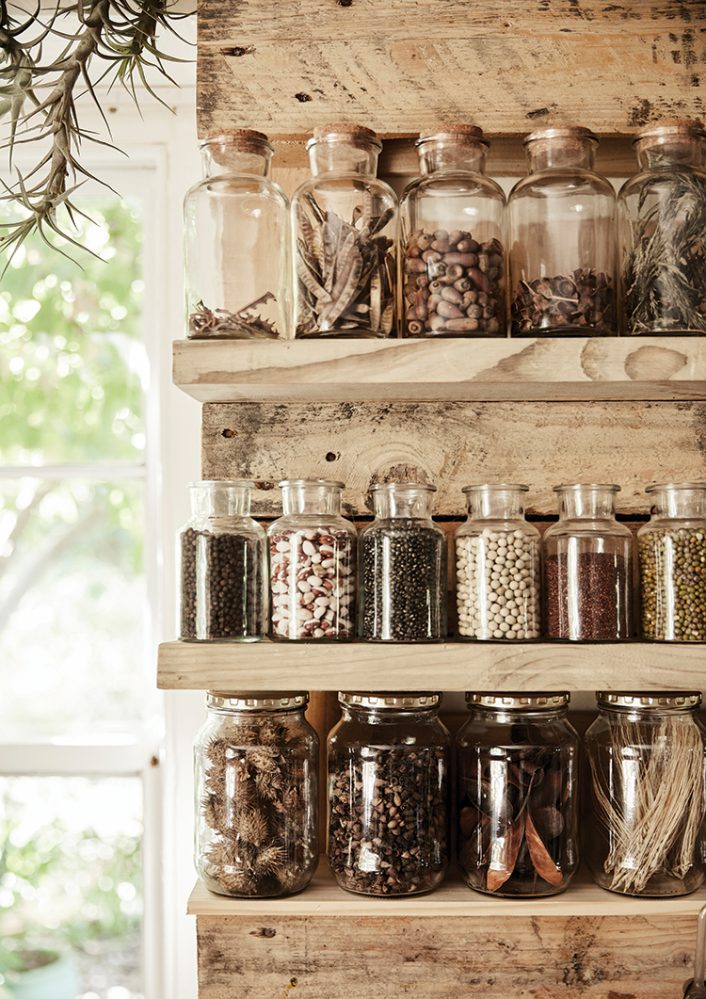
I have always been fascinated by the shapes and textures of flora and, even as a child, saw plants not as individual elements but as something bigger in context with space. I grew up in the rural Free State, the youngest of three brothers, where the farm was my playground. A quiet, introspective child, I would collect thorns from trees and make patterns in the sand. When I make my insects, I channel the same contentment I felt roaming the arid landscapes of my youth.
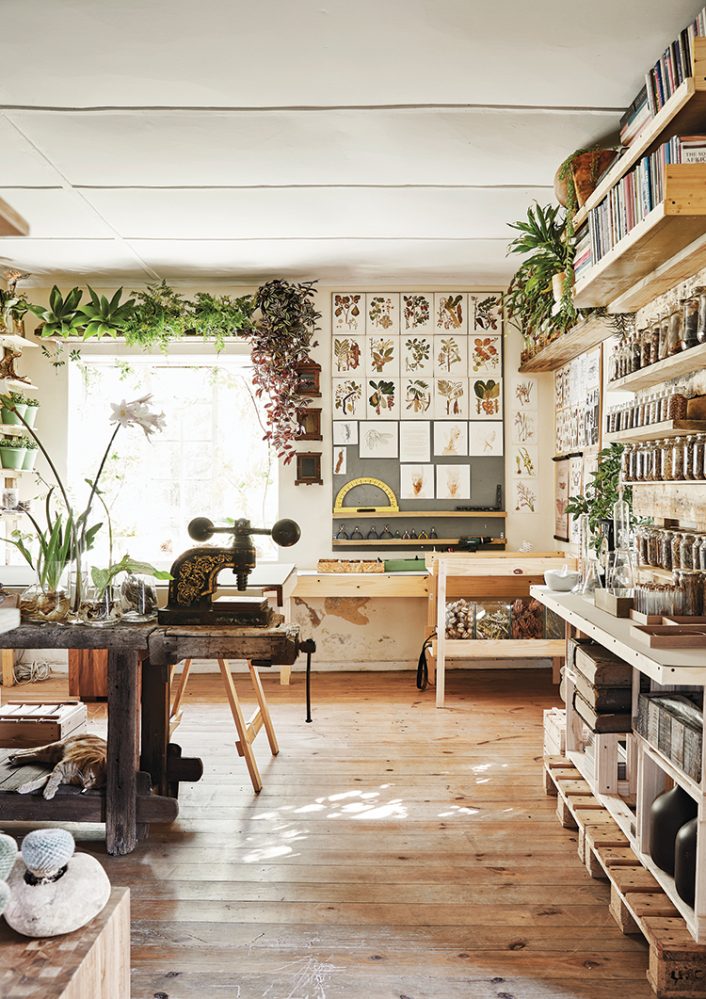
Having studied horticulture, I went on to practice as a horticulturist for six years. However, the desire to create was strong, and I moved on to launch an events company renowned for its conceptual spaces and massive flower and décor installations. It was a transitional time between Chris-the-horticulturist and where I am most comfortable to identify now as an artist.
The installations I created had a beginning and an end. I longed to create something more permanent. A decade later, I have conceived an entirely different habitat for my work. My home and studio are nestled in a cottage that is part of a historical rural homestead in the heart of winemaking country.
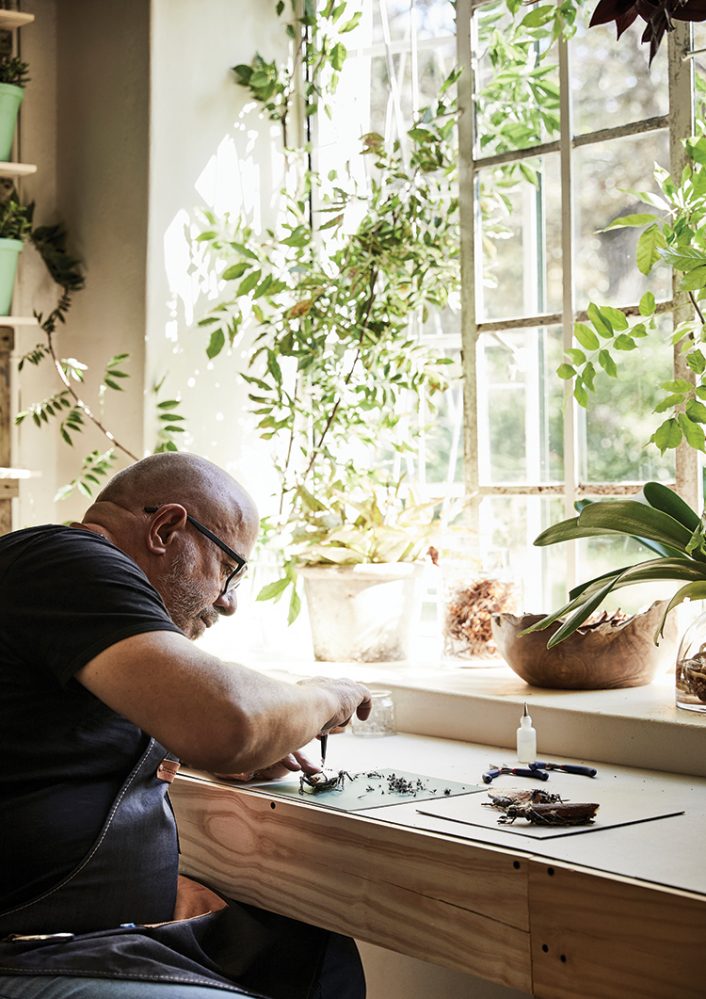
These days, I find satisfaction in creating pieces on a small scale, attracted to the challenge and limitations of a process that requires extreme concentration, creativity, and patience. I’m obsessed with detail. One piece could take me up to four days to make, sitting for hours at a time with tweezers and magnifiers. Making them to scale, or entomologically correct, doesn’t interest me. I use reference books as a starting point, but I’m not trying to replicate particular species. It’s about creating a piece of beauty.
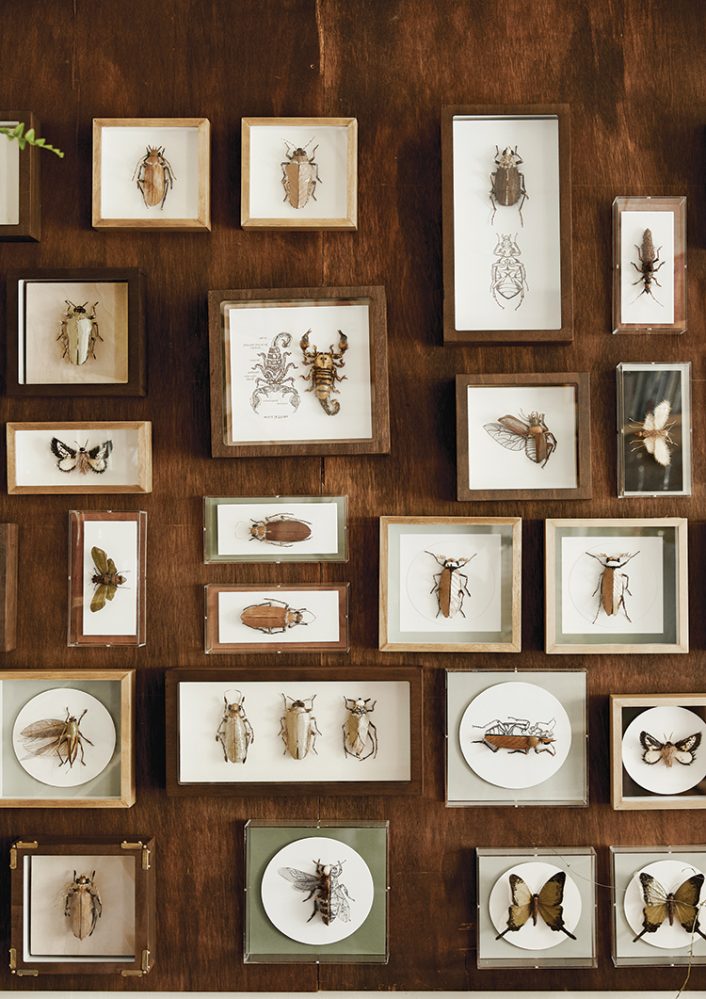

A butterfly’s antenna is club-shaped with a long shaft and a bulb at the point. The end of the style of an African protea flower happens to look identical. As a botanical artist, I believe my work is all about finding these examples of similitude in nature. Using leaves, seeds and other plant materials, I meticulously combine and assemble them, metamorphosing my foraged finds into insect forms.
I call my insects eco-skeletons; it’s a wordplay on the exoskeleton of a beetle. In my studio, the walls are crawling with my “insects”—from scorpions to green-winged butterflies—all handmade, through my obsessive creative vision.
One, a wild-looking bee with a downy abdomen, has a lifelike striped abdomen made from individual grass seeds I placed with precision over many hours to mimic delicate body hairs. Next to it, a butterfly has wings fashioned from pressed leaves, the pulp removed to expose the veins to resemble the structure of a wing.

Sometimes the materials I choose will dictate the artwork, such as my butterfly with its leafy green wings. They began life as magnolia leaves, which I processed to remove the pulp, leaving the fine veins of the leaf exposed like a carcass, only to find a second life as a wing on one of the eco-skeletons. It also works the other way around where I make a drawing of the insect, breaking it down into its components, and then I look for materials to create it.
I am surrounded by inspiration. In my studio, natural elements are dried, pressed and sometimes coloured using handmade vegetable dyes or charcoal. I am constantly tinkering with various plants in stages of decay and preservation, some of which take weeks to process.
I’ve always been a collector, but the previous lives of all the objects in my studio, not just the plant materials, contribute equally to my work. The rugged workbench in the heart of the studio, the antique crafts tools I use, and medical journals from the 1930s used to press leaves form part of my creative ecosystem. There’s a flow of energy and exchange between the pages and the plants and the wood and the insects that are part of the process.
My studio is crammed with bottles containing the medium for my work—seeds, leaves and other unidentifiable fragments of flower anatomy, painstakingly collected and catalogued. I forage a lot. The fynbos plant kingdom we have in the Western Cape offers a lot of possibilities. They are tough and textured.

I have always been fascinated by the shapes and textures of flora and, even as a child, saw plants not as individual elements but as something bigger in context with space. I grew up in the rural Free State, the youngest of three brothers, where the farm was my playground. A quiet, introspective child, I would collect thorns from trees and make patterns in the sand. When I make my insects, I channel the same contentment I felt roaming the arid landscapes of my youth.

Having studied horticulture, I went on to practice as a horticulturist for six years. However, the desire to create was strong, and I moved on to launch an events company renowned for its conceptual spaces and massive flower and décor installations. It was a transitional time between Chris-the-horticulturist and where I am most comfortable to identify now as an artist.
The installations I created had a beginning and an end. I longed to create something more permanent. A decade later, I have conceived an entirely different habitat for my work. My home and studio are nestled in a cottage that is part of a historical rural homestead in the heart of winemaking country.

These days, I find satisfaction in creating pieces on a small scale, attracted to the challenge and limitations of a process that requires extreme concentration, creativity, and patience. I’m obsessed with detail. One piece could take me up to four days to make, sitting for hours at a time with tweezers and magnifiers. Making them to scale, or entomologically correct, doesn’t interest me. I use reference books as a starting point, but I’m not trying to replicate particular species. It’s about creating a piece of beauty.








